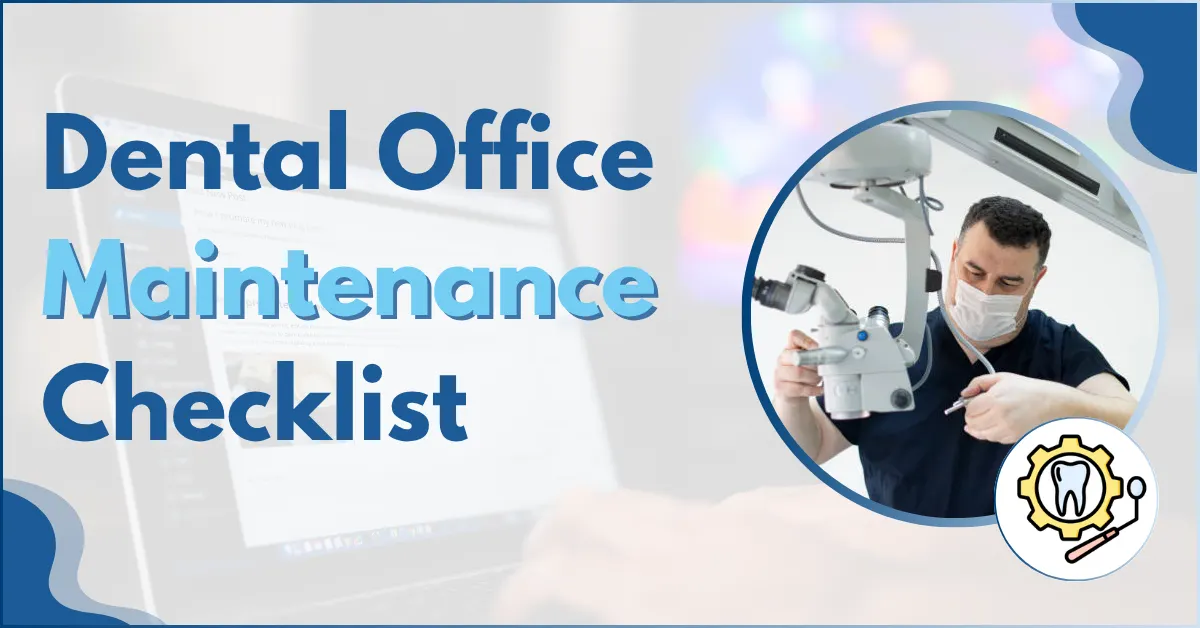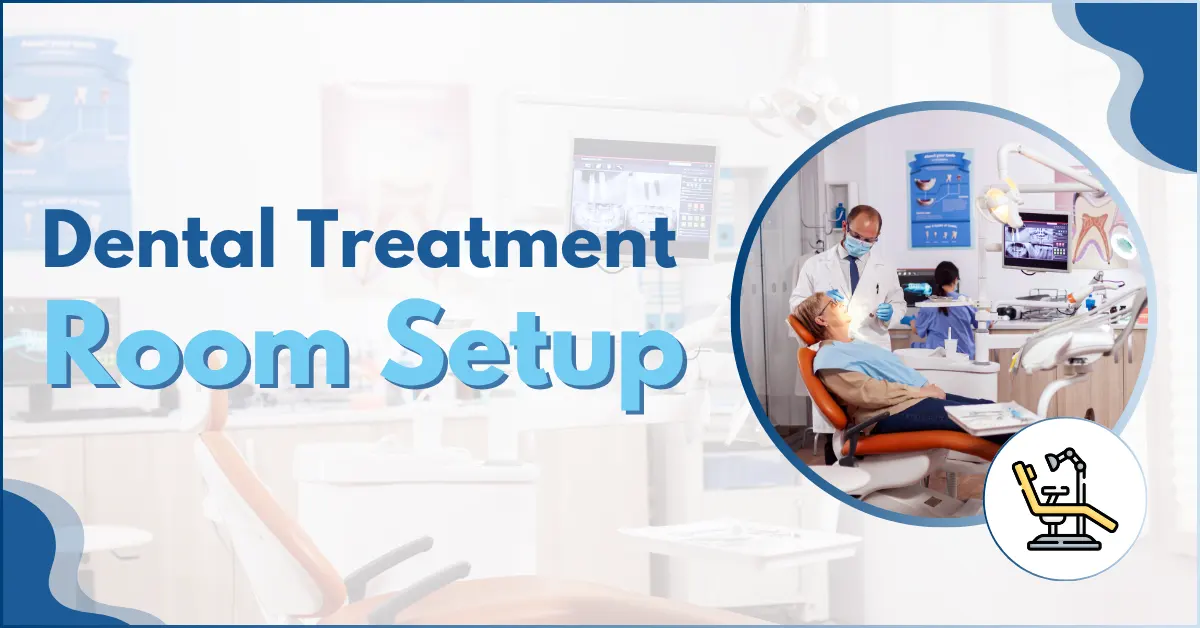Buying a dental practice can be beneficial for the dentist as it avoids the hassles of a brand new start-up and instead acquires all sorts of patients and cash flow as well as the infrastructure of a dental practice that is already up and running.
By buying a dental practice, you can easily compete with 202,304 in the USA ( according to the American Dental Association.
However, it is nothing close to a simple procedure. It needs careful planning, financial preparation, and a good understanding of the practice’s operations, culture, and profitability.
To walk you through this process, we have outlined in the guide how to buy a dental practice step by step.
Thinking about buying a dental practise?
Let’s make the process easier for you! Get a free consultation with our dental SEO experts to ensure your new practice gets the visibility it deserves from day one.

Key Considerations Before Buying a Practice
How to Buy a Dental Practice? 11 Potential Steps to Consider
Let’s break down the steps to buying a dental practice to help you go through the process with confidence.
Step 1: Preparation and Research

Before beginning the purchase process for dental services, it’s crucial to establish solid foundations through thorough research and preparation
This is a method to ensure you make the right choices and avoid costly mistakes in the process. Let’s take a look at this in detail
Determine Your Desired Practice Area
Before you begin your search, make sure to select:
Understand the Types of Acquisitions
There are multiple ways to approach the acquisition of a dental practice:
Step 2: Start Your Search for Dental Practices
Once you have identified your goals and conducted your initial research, the next step is to look for dental practices that meet your preferences. This is the process of exploring different ways to discover possible opportunities and evaluating them for their viability.
Where to Start?
Connect with Private Practice Owners Looking to Sell
Networking can lead to private sales that aren’t publicly listed. Some owners prefer direct negotiations to avoid brokerage fees and ensure a smoother transition for their patients.
The Role of a Practice Transition Consultant or Broker
Engaging a dental transition expert can help you determine the most effective methods, negotiate terms, and avoid costly errors. A broker has access to listings and industry connections that can give you an insight into the trends in the market.
Finding a Dental-Specific CPA, Attorney, and Lender
A specialist CPA as well as an attorney can help you in analyzing legal and financial agreements, whereas dental lenders can provide the most suitable financing options. These experts will make sure that the purchase is legal and financially feasible.
Using Mailers and Networking
Sending direct mail to dentists in your preferred area can uncover off-market opportunities. Personalized letters expressing your interest can lead to potential deals before they hit the open market.
Step 3: Evaluate the Practice’s Financial State Before Purchase
A deep financial dive will ensure the practice is profitable and sustainable.
Perform Due Diligence in the Practice
Due diligence is a critical phase in buying a dental practice, where you verify all claims made by the seller. Areas to focus on include:
Analyze:
Analyze Patient and Treatment Information
Evaluate Growth Potential & Room for Expansion
Look for:
Step 4: Determine Practice Value
The value of the dental practice is essential to ensure that you pay a fair amount and make an informed investment.
Quantitative vs. Qualitative Practice Valuation
You can determine the practice’s value by using both quantitative and qualitative metrics.
Quantitative valuation takes into account revenue, cash flow, and asset valuation
Qualitative factors include patient loyalty, location desirability, and brand reputation.
Cash Flow as an Indicator of Practice Valuation
A consistent cash flow can provide insight into a practice’s overall health. Practices with consistent cash flows tend to be more desirable since this ensures long-term stability post-acquisition
Dental Practice Valuation Rule of Thumb
When estimating the value of a dental clinic, many professionals start with the dental practice valuation rule of thumb. It offers a quick, general idea before diving into a full financial analysis.
Basic Rule of Thumb
These dental practice valuation multiples vary based on location, specialty, and profitability.
Why Use a Valuation Worksheet?
A dental practice valuation worksheet helps refine your estimate by factoring in:
Quick Valuation Formula
Here’s a simplified dental practice valuation formula:
Practice Value = (Net Income × Multiple) + Assets + Goodwill
Example:
If net income = $300,000, multiple = 2.5, assets = $100,000, and goodwill = $200,000
Estimated Value = $1,050,000
Don’t Forget Goodwill
Dental practice goodwill values often make up 60–80% of the total value. This includes patient trust, brand reputation, and referral relationships.
Common Valuation Methods Used in Dentistry
Avoid Overpaying for a Practice
Conduct careful due diligence, evaluate valuation methods, and seek expert guidance to prevent overpaying for a practice.
An overpriced practice could take years for its initial investment to return profits.
Step 5: Secure Financing for Your Practice Acquisition

The process of securing financing is an essential step in the process of acquiring a dental practice.
How to Find a Bank?
Not all lenders are the same. Finding a bank that specializes in dental practice acquisition financing is important. Many national and local banks offer healthcare-specific loans, which come with better terms tailored to dental professionals.
Best Banks for Dental Practice Loans
|
Bank Name |
Key Features |
|
Bank of America Dental Practice Loans |
A top lender for dental practice loans, endorsed by more state dental associations than any other lender. |
|
Live Oak Bank |
Leading dental lender offering acquisition loans, equipment financing, and working capital. |
|
Wells Fargo |
Competitive rates with strong experience in dental lending. |
|
BMO Harris |
ADA partner offering preferred dental practice loans. |
|
PNC Bank |
Provides dental practice loans and financing for companies with under $10 million annual revenue. |
|
21st Century Bank |
Offers dental financing, practice loans, and refinancing options. |
|
Henry Schein Financial Services |
Provides dental practice financing, including project financing for new practices. |
|
Fifth Third Bank |
Offers practice financing solutions. |
|
First Citizens Bank |
Offers dental practice purchase financing, as well as startup and buy-in financing. |
Consult Three Banks, But Why?
Consult at least three banks to compare lending options, rates, and terms before choosing a financial partner. Different lenders may offer varying loan structures and benefits tailored to dental practice acquisitions.
Choose a Dental-Specific Lender
Dental-specific lenders understand the unique financial landscape of dental practices. These lenders typically provide:
Loan Structure and Interest Rates
Understanding how your loan is structured is critical. Loans can have:
Consult your CPA to determine the best loan structure for your acquisition.
Step 6: Make an Offer and Negotiate the Purchase
After you have found a dental practice that fits your criteria and you have secured financing, your next step is to submit an offer to the practice and then negotiate the conditions of the purchase
Writing and Submitting a Letter of Intent
A Letter of Intent (LOI) is a non-binding agreement that outlines your offer for the practice. It typically includes:
Step 7: Lease Negotiation or Real Estate Purchase
Choosing the best site for your dental practice is a critical step. If you decide to lease or purchase the property and negotiate favorable terms, it will determine the long-term success of your dental practice.
Should You Buy or Lease Commercial Space?
Depending on your long-term business goals, you may choose to lease or buy the property where the practice operates.
Buying offers long-term equity benefits, while leasing provides flexibility and lower upfront costs.
Key Considerations for Lease Negotiation
If leasing, consider:
Step 8: Finalize the Purchase
At this point, you must examine the legal contract, verify financing, and ensure that all necessary due diligence has been completed prior to officially assuming ownership.
Close on Your Practice and Becoming an Owner
Once due diligence is completed and financing is secured, you’ll sign the final purchase agreement. This legal contract transfers ownership and ensures all terms are accepted.
Transition Ownership Smoothly
For a smooth transition, consider:
Step 9: Hire and Manage Your New Dental Team

The hiring and management of a skilled dental team is essential to the achievement of your new dental practice.
Retain Existing Staff While Making Necessary Changes
The existing staff is an essential part of the practice. Retaining them while making gradual improvements can help ensure continuity and a positive workplace culture.
- Meet with Current Employees: Introduce yourself, learn about their roles, and discuss your vision for the practice.
- Evaluate Strengths and Weaknesses: Identify key team members and assess whether additional training or restructuring is necessary.
- Offer Competitive Compensation and Benefits: Retain valuable employees by ensuring they are fairly compensated and provided with incentives.
- Encourage Open Communication: Address concerns and provide reassurance about the transition.
Hire New Team Members
If staffing changes are needed, follow these steps:
Manage Your Team Effectively
Step 10: Grow and Manage Your New Practice | Post-Purchase Action Plan
Now that you have bought the dental practice and gathered your staff, the next step is to grow and manage your business efficiently.
The success of your practice depends on a keen concentration on patient retention marketing strategies, as well as operational efficiency.
Enhance Patient Experience
Advertise Your Practice to Attract New Patients
Financial and Operational Management
Step 11: Tech and Software Upgrades to Consider
Making the right investment in technology can enhance the experience of patients and operational efficiency. It can also ensure long-term success. Consider upgrading:
Checklist for Dental Practice Buyers
This checklist helps keep the process organized and ensures you don’t miss critical steps:
|
Sr # |
Action |
|
1 |
Define your goals and desired practice location. |
|
2 |
Research market conditions and potential dental practices for sale. |
|
3 |
Secure financing options and understand your budget. |
|
4 |
Engage professional advisors (broker, attorney, CPA, lender). |
|
5 |
Conduct preliminary practice evaluations. |
|
6 |
Contact sellers and request detailed financial and operational data. |
|
7 |
Perform in-depth due diligence (financials, patient retention, legal compliance). |
|
8 |
Draft and negotiate a Letter of Intent (LOI). |
|
9 |
Finalize financing and secure loan approval. |
|
10 |
Negotiate lease agreements or property purchases. |
|
11 |
Sign final contracts and complete the acquisition. |
|
12 |
Plan for post-purchase transition and integration. |
Avoid Common Mistakes When Taking Over a Practice
Benefits of Buying a Dental Practice?
Many dentists choose to buy instead of starting with a blank slate, which is a wise choice. An established practice already includes:
However, purchasing dental practices will require a substantial budget, a thorough study, and professional guidance.
Knowing the risks involved will ensure that you make the right decision. If it’s done right, the acquisition of a dental practice could be a profitable investment that can kick-start the career path of a dental practice owner.
Buying a Dental Practice Is Not Without Risk
Buying an existing dental clinic may seem like a safe option, but it’s not completely risk-free. Before making a decision, it’s important to be aware of some challenges:
FAQs
Final Thoughts
Buying a dental practice is a major decision that requires strategic planning, financial analysis, and expert guidance. By following this blog on how to buy a dental practice, you can successfully become the owner of a thriving dental business.
References







